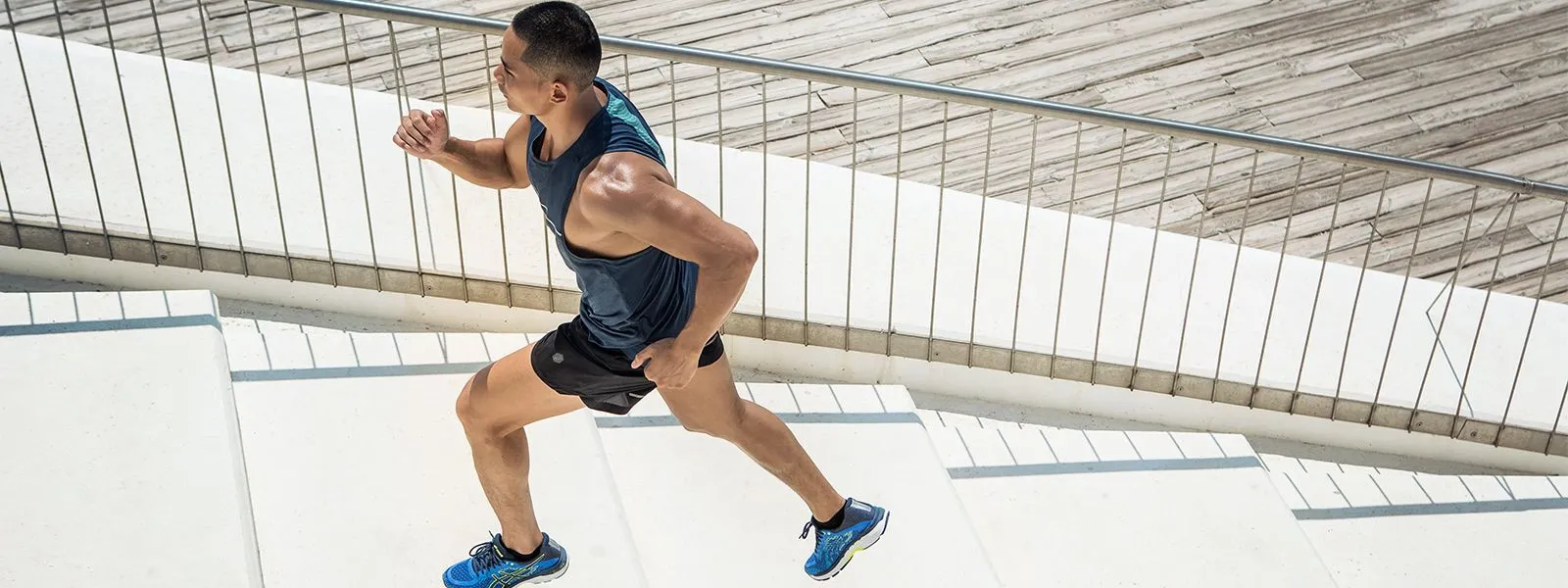
How to Improve Running Speed: 5 Different Methods to Follow
June 6, 2018
Whether you’re relatively new to the sport or have decades of experience, everyone wants to improve running speed in competitions and beat their personal best. We can’t all be Usain Bolt, but we can incorporate different kinds of exercise to increase our overall times, whether running for fun or in a race. And the good news is there are plenty of things you can do to increase your speed of running.
Many runners find they reach a fitness plateau and struggle to know how to increase running speed. The simple truth is that the only way of increasing running speed is to actively run faster – you won’t improve your race times by simply doing the same kinds of long, slow, endurance-building jogs you’ve always done.
So, try using the following 5 methods to help improve running speed and see how your race times start getting lower.
Table of contents:
1. Interval training
2. Add sprints into your long run
3. Choose lightweight running shoes and gear
4. Skipping rope workouts
5. Build your strength
Let’s dig in and learn more about how to increase running pace.
How to increase running speed with 5 simple methods
Below are 5 simple methods to improve your running speed – but first, how should you measure your speed? There are a couple of ways to measure your speed which you might find useful:
- Measure your sprinting speed over 400 metres: 400 metres is the distance of a standard track, so it makes sense to use this as a baseline distance. Record your time running at your top speed around a track. Using some of the exercises below should increase your average time running 400 metres over a few weeks.
- Count your steps per minute: While measuring your pace on a 400-metre track is accurate, it might not feel so relevant in the ‘real world’ of running across varying surfaces in a race. So, you might find it more effective to count your steps per minute. So, for one minute, count how many times your right foot hits the ground, then double the final number to find out your steps per minute. Professional long-distance runners aim to keep this number around 180, with fast, low feet.
You might also find it useful to keep your runs stored in a mobile app which records average speed per mile and gives you a benchmark to build on – without having to write everything down!
What are your reasons for improving your speed of running?
It can be useful to think about your motivations for increasing your running speed. This may also influence the kinds of methods of training for speed you decide to use. For example, a marathon runner will focus on adding sprints into their long runs, while a competitive track racer will benefit from building muscle. Think about your reasons for increasing running speed, then try out the following tips.
5 runners’ training methods for speed
Here are 5 useful methods to improve running speed, whatever your level:
1. Interval training
Interval training is a popular method used by runners to improve speed. Visit your local running track and, after a warm-up, try out this interval-training routine:
- Start by measuring your heart rate – it should be under 120 BPM before you start exercising
- Set your stopwatch, then sprint at 95% of your maximum effort, covering 200 metres down the track before coming to a stop
- Wait and recover until your heart rate has dropped below 120 BPM, then repeat
Interval training helps improve running speed by gradually increasing your body’s efficiency at clearing lactic acid from the muscles – which means that, over time, you’ll be able to run faster for longer.
2. Add sprints into your long runs
This is an especially useful method for long-distance-marathon or ultramarathon runners to gradually increase their pace per mile. The method is simple enough once you’ve figured out your average speed per kilometre or mile.
For example, if you know that you’re averaging five minutes per kilometre, try and increase your speed in that last minute of every kilometre to up your average. By actively adding sprints into your training runs, your body will get used to adding these bursts of energy in, and you’ll improve stamina too. This is an effective form of speed endurance training which will start showing results in your race times fast.
3. Choose lightweight running shoes and gear
Skim off any weight that’s slowing you down by running in lightweight shoes and proper running kit . Lightweight running shoes are different to regular trainers because they use new kinds of extra-light foam soles while also stripping back any unnecessary weight. The same goes with clothing – if you’re running in cotton t-shirts and a pair of old joggers, you’ll notice a dramatic difference when you start wearing lightweight, breathable fabrics which dissipate moisture and dry quickly.
4. Skipping rope workouts
Using a skipping rope can play a big part in making you a faster runner and is a great training method for speed used by many of the world’s most successful athletes.
Skipping forces you to move your feet fast while keeping your core and upper body strong. Faster feet can make you a faster runner over all, and skipping also helps engage your fast-twitch muscles. You can also introduce different kinds of skipping routines into your workout to keep it interesting.
- Complete one minute of standard back-to-front skipping, jumping about 6 centimetres off the ground
- Rest for 15 seconds
- Complete one minute of slalom skipping, where you jump about 20 centimetres off the ground and land on both feet to the right, before jumping another 20 cm off the ground and landing on the left
- Rest for 15 seconds
- Complete one minute of running-skipping, running in place and ensuring the rope passes under one foot at a time
- As your confidence grows, add in other skipping exercises too.
5. Build your strength
While runners certainly don’t want to ‘bulk up’, adding in some basic weight training into your routine will make your body stronger and more powerful, and able to burst forward at speed. Common running strength-training exercises include:
- Weighted lunges
- Plyometric box jumps
- Jumping squats
- Burpees
- Press-ups
Begin increasing running speed today!
The only way to get faster at running is to run faster! By incorporating some of these exercises into your running routine, you can expect to notice improvements in race and track times. By keeping a record of how you’re doing - including details on your speed of running - it can be really motivating to see your progress over time. It should also start impacting your race times too. Good luck!
